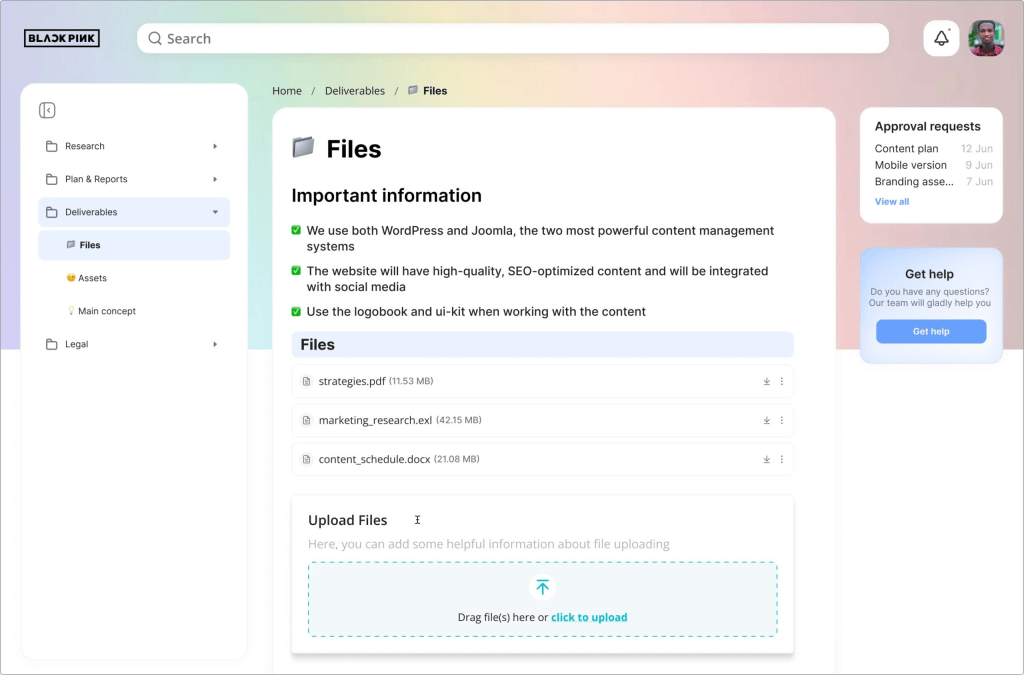
Ever wondered what institutional knowledge is and why it’s crucial for your organization’s success? In this post, we’ll delve into the concept of institutional knowledge, explore its various types, and understand its significance. We’ll also address the challenges of managing this knowledge and provide practical solutions. Additionally, you’ll find tips on creating efficient knowledge bases with real business examples, and discover the best strategies and tools to streamline your knowledge management process. Let’s get started!
What is Institutional Knowledge and Its Types?
Institutional knowledge is the collective wisdom and experience within an organization. It encompasses everything from best practices and processes to the history of products and services. There are three main types of institutional knowledge:
- Tacit Knowledge: Skills and expertise developed through experience.
- Explicit Knowledge: Information that can be easily taught and accessed.
- Implicit Knowledge: Unwritten knowledge that exists in the minds of employees.
Understanding these types will help you appreciate the value of knowledge sharing in your organization.
Challenges of Institutional Knowledge Management
Effective knowledge management involves systematically capturing, organizing, sharing, and utilizing knowledge within an organization. This can be achieved through various strategies such as creating a centralized knowledge base, encouraging a culture of knowledge sharing, and leveraging technology to facilitate communication and collaboration.

The benefits of effective knowledge management are manifold:
- Improved Decision-Making: Access to accurate and relevant information enables better choices.
- Increased Efficiency: Streamlined processes reduce redundancy and save time.
- Enhanced Innovation: Sharing ideas fosters creativity and new solutions.
- Greater Agility: Quick access to information allows for faster adaptation to changes.
By ensuring that valuable knowledge is easily accessible, organizations can avoid redundant efforts, reduce training times for new employees, and maintain a competitive edge.
However, institutional knowledge often faces several challenges:
- Knowledge Silos: Information not shared across departments leads to inefficiencies and a lack of cohesive strategy. Fostering a culture of collaboration and open communication can break down these silos.
- Capturing Tacit Knowledge: The know-how individuals gain through experience is hard to document. Implementing mentoring programs and informal training sessions can help transfer this valuable knowledge.
- Outdated or Inaccessible Documentation: This can hinder productivity and lead to errors. Regularly updating and maintaining a centralized knowledge base ensures that employees have access to the most current and relevant information.
To determine if there are any issues with Institutional Knowledge Management, we offer the following Analysis Checklist:
- Is the information easy to find for everyone?
- Are there any obstacles to accessing the knowledge base?
- Does the organization promote and reward sharing knowledge?
- Are there regular meetings or platforms for sharing information?
- Is information stuck in specific departments or teams?
- Is there a lack of strategy due to isolated information?
- Are there ways to capture employees’ experiential knowledge?
- Does the organization have mentoring or informal training sessions?
- Is the documentation updated with current information?
- Are employees using the latest documents?
- Is the organization using the right technology for communication and collaboration?
- Are there any tech gaps affecting knowledge management?
Tips on Creating Efficient Institutional Knowledge Bases
1. Communicate the Importance
Ensure employees understand the value of the knowledge base. Highlight how it can improve efficiency, foster collaboration, and serve as a single source of truth. Google, one of the world’s leading tech giants, faced challenges in managing the vast amount of information and knowledge generated by its employees. With teams spread across the globe, it was crucial to have a system that could store and disseminate knowledge efficiently.
Google implemented an internal knowledge base called “Google Snippets.”It serves as a repository of institutional knowledge that can be accessed by anyone within the company.
Outcome:
- Enhanced Communication: Google Snippets improved communication across teams and departments, ensuring that everyone stays informed about ongoing projects and developments.
- Knowledge Sharing: Employees can learn from each other’s experiences and insights, fostering a culture of continuous learning and improvement.
- Increased Productivity: By having easy access to relevant information, employees can make informed decisions quickly, leading to increased productivity.
2. Create an Internal Wiki
This platform is designed to enhance collaboration among team members by enabling them to create, edit, and share documents in real-time. Your Internal Wiki ensures that all team members have access to the most current information, fostering a more efficient and cohesive working environment.
Key Features
- Real-Time Collaboration: Create, edit, and share documents with team members instantly.
- Version Control: Track all changes, maintain a comprehensive history, and revert to previous versions if needed.
- Access Control: Manage permissions to ensure that only authorized team members can view or edit specific documents.
- Search Functionality: Quickly find the information you need with powerful search tools that index all document content.
User permissions are another critical feature of the Internal Wiki. Tools like FuseBase and Notion allow administrators to manage who has the ability to view or edit content, ensuring that sensitive information is only accessible to authorized personnel. This not only enhances security but also allows for a more organized and controlled workflow. By tailoring access levels, teams can collaborate more effectively while maintaining the integrity and confidentiality of their documents.

3. Organize Onboarding Training
Onboarding training is a crucial process to help new hires understand and navigate your organization’s internal wiki effectively. Here are some steps to organize and implement a successful onboarding training program:
Have Experts Available: Ensure that experienced team members or subject matter experts are available to guide new hires through the internal wiki. Their expertise can provide valuable insights and answer any questions that may arise.
Encourage Continuous Learning: Promote a culture of continuous learning and knowledge sharing among team members. This can be achieved through regular training sessions, workshops, and collaborative projects that keep everyone updated on the latest information and best practices.
Use All-in-One Tools: Utilize all-in-one tools that help structure information and streamline team workflows in one workspace. These tools can integrate various functions such as document management, project tracking, communication channels, and knowledge bases. By consolidating these elements into a single platform, teams can work more efficiently, reduce the risk of information silos, and ensure that everyone has access to the most up-to-date information. Examples of such tools include Asana, FuseBase and Monday.com, which offer customizable templates and collaborative features to suit the specific needs of your organization.

By implementing these strategies, you can ensure that new hires are well-equipped to use the internal wiki effectively, contributing to the overall efficiency and knowledge management within the organization.
Summary
Ready to transform your knowledge management process? We’ve explored the concept of institutional knowledge, its types, and the challenges of managing it. We’ve provided practical tips for creating efficient knowledge bases and highlighted the best strategies and tools. Implementing these insights will help your organization stay competitive, innovative, and efficient.
